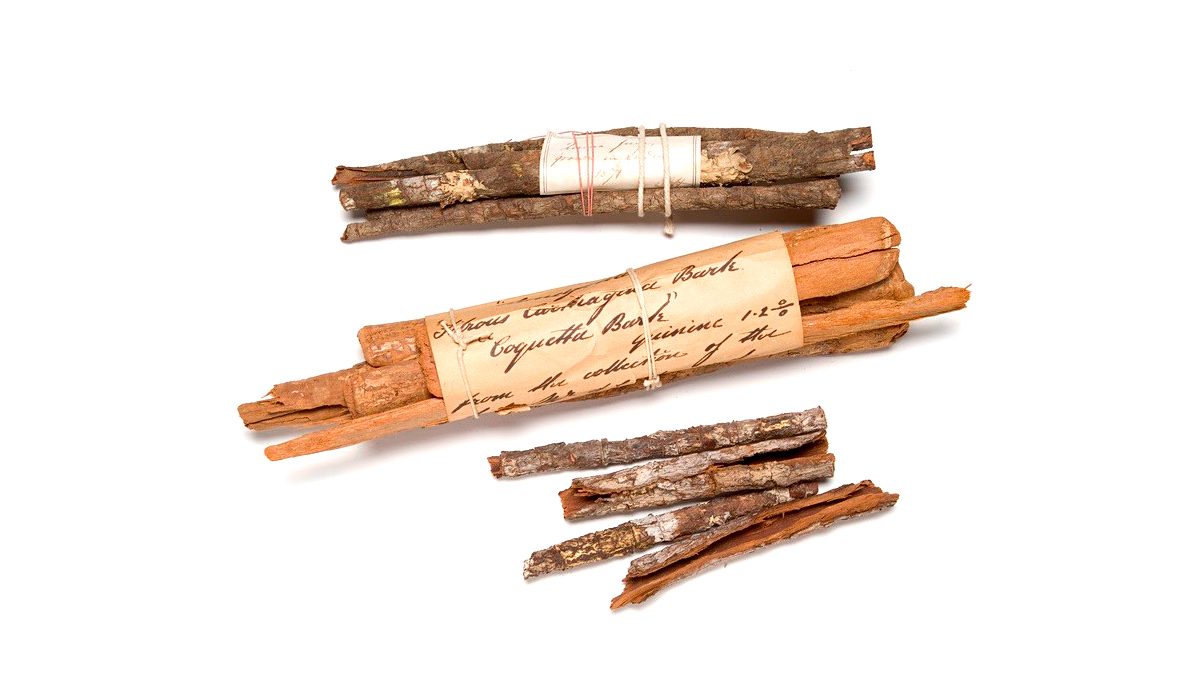In 1964, O. L. Ekpechi and A. N. Okoro authored an unassuming one-page letter to the Archives of Dermatology about a neglected adverse drug reaction. The two doctors, writing from London and Lagos respectively, wanted to remind readers that the journal’s recent review article on chloroquine omitted the fact that this antimalarial medication caused pruritus — or the strong urge to scratch or rub your skin. The data they cited came exclusively from Nigerian hospitals, where pruritus rates measured between 8 and 15 percent, depending on the region. In their conclusion, they noted that the adverse reaction had both economic and public-health implications, since patients experiencing this unbearable itch stayed home from work. The doctors state: “We observed this reaction in male and female adult patients, predominantly Negro, who were on the accepted therapeutic doses of chloroquine.” This specific mention of black patients ignited 50 years of scientific racism that continue to be observed in this era of COVID-19.
The history of chloroquine follows a history of military engagements. By the time the Archives published Ekpechi and Okoro’s letter, chloroquine had risen to prominence in the United States’ bid for imperial dominance through biomedicine. Before synthetic antimalarials like chloroquine, infectious disease experts relied on the agriculturally sourced cinchona bark to produce an antimalarial drug, quinine. During the Revolutionary War, Congress purchased cinchona from Peru to combat the malaria widely present in all 13 original colonies. The disease would go on to have a debilitating effect on both the Federal Army stationed in the South during the Civil War and Reconstruction and soldiers in military occupations of Cuba and Central American countries in the earlier decades of the 20th century. When Japan captured Java in 1942, the U.S. supply of quinine was cut off, and the surgeon general began investigating alternatives as the military anticipated a prolonged conflict in the Pacific where infectious mosquitoes were common. The military’s renewed investment in malaria treatment during World War II was only the latest iteration of U.S. public health linked to national security.
In the Pacific, the U.S. Navy first utilized the drug quinacrine (also known as mepacrine or atabrine) to battle malaria, though many soldiers refused to take it due to debilitating adverse effects like nausea, headaches, and diarrhea. In a stroke of cosmic irony, quinacrine also has the tendency to turn skin yellow, which soldiers surrounded by racist anti-Japanese propaganda quickly noticed. As one radar technician stationed on the Marshall Islands later remarked: “I took so much . . . I was starting to look like the enemy.” All these deleterious effects pushed researchers to seek a better alternative. Chloroquine was approved by the Board for Coordination of Malarial Studies in April of 1946, eight months after U.S. forces detonated atomic bombs over Japan.

Some of the research during the mid- to late 1940s was coordinated among the federal Office of Scientific Research and Development, University of Chicago researchers, and military scientists deployed by the surgeon general. They focused on treating active infections and reducing rates of malarial relapse, since the parasite that causes the disease tends to hide in the liver and reemerge weeks, months, or even years later. Unlike Ekpechi and Okoro’s patients, who took chloroquine at civilian hospitals and clinics in Nigeria, these American test subjects were often incarcerated and, in some cases, exposed to excess and prolonged chloroquine doses or deliberately exposed to infectious mosquito bites. These researchers regularly documented pruritus among their test subjects without noting any differences in pruritus rates between racial groups. Their work established in the medical literature that chloroquine toxicity could cause changes in vision and electrocardiogram measurements as well as hair bleaching and rashes.
From these origins in U.S. prisons, the blossoming scientific literature on chloroquine split into three distinct fields in the 1960s and ’70s: malaria treatment, autoimmune disease treatment for lupus, and biochemistry. Before Ekpechi and Okoro’s letter, researchers interested in chloroquine for malaria treatment did not assume any racial difference in patient outcomes. However, as chemists analyzed chloroquine in animal models they found that chloroquine molecules bind to melanin — the pigment that gives eyes and skin darker hues. Among some autoimmune-disorder researchers, this finding explained chloroquine-induced retinopathy (damage to the part of the eye that senses light), and assumptions conflating melanin with race soon followed. Doctors like Allen Mackenzie, who researched autoimmune disorders in this era, warned against this leap from molecular melanin to black skin as early as 1970: “There is no direct evidence that Negroes and Caucasians differ in risk of chloroquine retinopathy.” Despite these concerns, subsequent research contained a series of fallacies and omissions facilitating the transformation of pruritus into a “black side effect.”

"Cautiously advancing through the jungle, while on patrol
in Japanese territory off the Numa-Numa Trail, this member
of the 93rd Infantry Division is among the first Negro foot
soldiers to go into action in the South Pacific theater."
May 1, 1944. 111-SC-189381-S.
The first problem in these articles was the a priori assumption that blackness and whiteness were biologic differences rather than social categories. By publishing studies titled “The Urinary Excretion of Chloroquine in Different Ethnic Groups,” or “Comparative Studies of Chloroquine Kinetics in Healthy Swedes and Nigerians,” journals framed racial difference as a reasonable scientific question without ever defining objective criteria for determining ethnicity or nationality. Even though these two studies ultimately found no significant physiologic difference between racial groups, the damage was done. These tantalizing titles encouraged a kind of intellectual inertia that promised a racial difference for those who kept looking.
While white research was elevated, black scholarship during this time was lost. One prolific researcher, I. A. Olatunde, published “Chloroquine-induced pruritus in Lagos, Nigeria” in the Journal of the Nigerian Medical Association, and it was cited numerous times as proof of racial difference. In my search of the archives, Olatunde’s 1969 piece seems to have gone missing due to a misprint that put its publication outside the print range of the Journal of the Nigerian Association, which ran from 1964 to 1965 before ceasing and resuming in 1971. Olatunde’s 1970 thesis on chloroquine at the University of London was also never preserved. Without these works, it remains difficult to ascertain whether white scientists were accurately interpreting his work or whether they misunderstood how Nigerian scientists defined race at the time.
As chloroquine studies proliferated, racial comparisons about pruritus went through a perverse game of telephone. As a result, a small number of citations grew more and more exaggerated, while data from military trials in the 1940s that showed no racial difference were systematically ignored. For example, a 1989 article states antimalarial itching is “higher in Blacks than Caucasians,” but the reference article links a chloroquine study performed on rats and monkeys. Another 1997 study of chloroquine-induced pruritus describes the condition as “extremely rare in Caucasians” but cites Ekpechi and Okoro’s letter, which never mentioned white patients. What was once a descriptive observation of “predominantly Negro” patients was now being deployed as a racially prescriptive requirement for diagnosis. Research about black patients became evidence of a difference in black patients.
This is a mistake many advocates seek to correct. “The delusion that race is a biological inheritance rather than a political relationship,” writes the scholar Dorothy Roberts in her book Fatal Invention, “leads plenty of intelligent people to make the most ludicrous statements about black biological traits.” Chloroquine’s imperial legacy further complicates Dr. Roberts’s formulation and adds another level of political relationship to the COVID-19 pandemic. The repeated scapegoating of the Chinese government, laboratories, and lifestyle by U.S. media and politicians has brought biomedicine back to the Pacific theater. Like before, the United States was cut off from supply lines and needed a domestic solution to Oriental danger. President Trump offered chloroquine and its molecular variant, hydroxychloroquine, as a panacea to a population desperate for personal protective equipment, and in the process, a drug predominantly used by formerly colonized countries could be repackaged for white consumers. While there needs to be a more thorough FOIA investigation into exactly how these false hopes were promulgated, it’s not surprising that a chloroquine cure had its roots in xenophobia. One of the functions of Western medicine is to guarantee the health of whiteness.
Following Ekpechi and Okoro, there were two decades of African biomedical scholarship that seem to have been ignored by the global chloroquine research community. Alongside Olatunde’s prolific investigation of the drug, researchers like N. G. Osifo, L. A. Salako, and R. S. Okor, writing from the Universities of Benin and Ibadan, slowly amassed the biomedical and epidemiologic data needed to disavow chloroquine’s racial effects. Their counter theory showed pruritus was caused by a complex reaction between the infectious malarial parasite, the drug, and human skin, an idea supported first by animal tests on rabbits and rats before they moved on to Nigerian epidemiologic surveys.
It’s challenging to read these reports, as they contain a perfunctory consideration of the melanin-binding theory of pruritus while also appearing skeptical of a race-based explanation. What was harder still, to even cite their sources and stake a claim to knowledge, these scientists needed to acquiesce to colonial terminology and employ language such as “negroid,” “negroid extraction,” and “Afro-caucasoid” to describe their findings. By 1984, a clear sense of the inconsistencies appears in Dr. Osifo’s writing, and within five years he had taken a stance:
The relative absence of white patients . . . has led to speculation that the exaggerated pruritic reaction to chloroquine was almost exclusively confined to blacks, [according to the data] race and skin melanin content are not overly significant epidemiological variables that predispose to chloroquine-induced pruritus.
Osifo’s understanding of pruritus continues to be underrecognized even when the medical historiography corroborates his findings. Despite the best efforts of Nigerian researchers, Western medical publications perpetuate a flawed chain of citations. From a Nigerian public-health perspective, pruritus continues to cause epidemiologic concern, since numerous surveys show that patients avoid taking their chloroquine because of the itch, but it by no means proves black skin is uniquely vulnerable to the medication.
In January 2020, Dr. Rhea Boyd summarized the state of racism within U.S. health care in her review of Dr. Jonathan Metzl’s Dying of Whiteness. In the review, Boyd argues that diseases clustering in different racial populations are explained by a system of white supremacy within medicine. Her argument ties together two data sets: patients of color disproportionately suffering from chronic illnesses leading to kidney failure, heart failure, and cancer, alongside white patients who’ve witnessed a rise in “self-destructive” deaths by opioids, alcohol, and firearms. From Boyd’s perspective, both should be categorized as “diseases of disproportionate opportunity.” These are opportunities granted by what she describes as “the armed defence of whiteness” through continued economic and political processes of subjugation.
“Death,” writes Boyd, “is the inevitable consequence of the full realization of structural racism and the exclusive rights and resources it offers those who can become white.” Such a duality of scarcity and excess continues, as chloroquine research expands beyond malaria-exposed regions in response to the pandemic. On a population level, black communities already disproportionately burdened with chronic illnesses like diabetes and high blood pressure are now dying of increased COVID-19 exposure and lack of testing resources. In contrast, one can’t help but read “disproportionate opportunity” in a story from March about an Arizona couple who heard President Trump repeatedly praise chloroquine as a COVID-19 treatment and decided to drink a chloroquine-derivative product intended for fish tanks. The wife survived, while her husband succumbed to the chemical’s toxicity.
After several months of political strong-arming, the hype and confusion surrounding chloroquine and hydroxychloroquine as a COVID-19 treatment hit a clinical dead end. On May 22, the Lancet published a trial that combined data from 671 hospitals to show the drugs had no improved benefit and actually decreased survival. In retrospect, the dream of a wonder drug was always a smokescreen hiding how health-care inequity drives COVID-19 death rates in the U.S. Boyd’s premonition has proved eerily true. Despite the President’s claim of taking hydroxychloroquine, it’s a system of white supremacy that guarantees both his personal and his political immunity.
I suspect the May 22 study, which administered chloroquine or hydroxychloroquine to almost 15,000 racially diverse patients, might have inadvertently and incontrovertibly confirmed that there is no racial predilection for pruritus. There is no mention of pruritus as an outcome variable in the paper, and a follow-up email with Dr. Mandeep Mehra, one of the paper’s authors, confirmed that the researchers did not collect pruritus data in the study. It may never be academically valuable for a global research team to collect the evidence needed to show that chloroquine-induced pruritus occurs across racial groups. But even without this empirical data, there is more than enough social-science research to demonstrate that the premise of biologic race is untenable. Nevertheless, medicine’s peer-review process refuses to update this paradigm. Instead of chloroquine binding to melanin, a more accurate statement seems to be that obsolete theories of blackness remain bound to chloroquine.
Malaria historiography reveals how pharmaceutical knowledge is tied to imperial and carceral projects, as early U.S. chloroquine researchers built their academic careers using military funding and imprisoned bodies. The data they produced is not so much a trail of evidence as layers of armor. In contrast, their Nigerian peers, like Dr. Olatunde, who questioned these ideas using civilian hospital data, seem unable to pierce through these citations and disrupt racial categorization. Questions raised by African biomedical scholarship do not receive the privilege of international investigation. This antimalarial drug is just one case in more than a century of medical literature blaming black lungs, hearts, kidneys, skin, bones, prostates, and uteruses for the health disparities in black communities in order to justify a racial hierarchy tended to by white doctors. In turn, these beliefs are still taught at U.S. medical schools, tested by the National Board of Medical Examiners, and trafficked in medical journals.
The cure for white supremacy, declares Dr. Boyd in the conclusion of her review, is for “those who can become white [to] summon the courage to unbecome white and then to eliminate whiteness.” As the pandemic reinforces how public health is determined outside the hospital, it demands an expansive model of medical activism. Physicians and researchers who join the struggle must create vigilant and dynamic organizations capable of targeting scientific racism wherever such citations appear. Without this coordinated effort, white supremacy seems bound to stick.
•
Further Reading
“Malaria in American Troops in the South and Southwest Pacific in WWII.” Robert JT Joy, Medical History, 1999. 43: 192-207.
“The prisoner as model organism: malaria research at Stateville Penitentiary,” Nathan Comfort. Studies in History and Philosophy of Biological and Biomedical Sciences. SEPT 2009. 40(3): 190-203.
“Taking race out of human genetics.” By Michael Yudell, Dorothy Roberts, Rob Desalle, Sarah Tishkoff. Science. 05 FEB 2016: 564-565.
